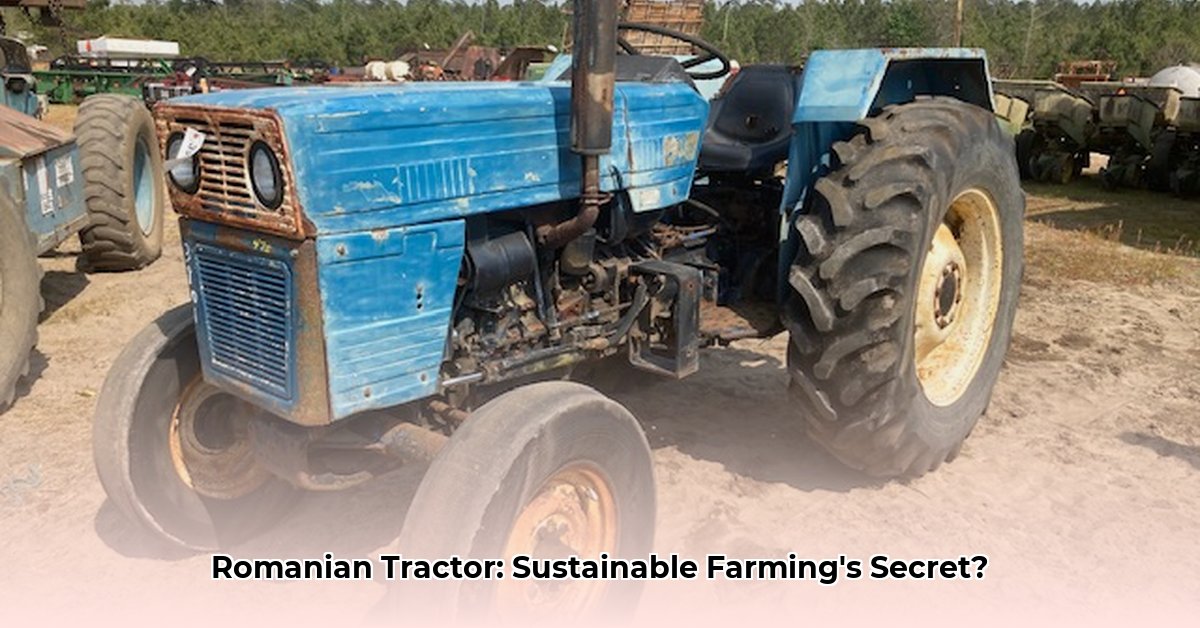
The Romanian Long 360 Tractor: A Case Study in Sustainable Agriculture?
The Romanian Long 360 tractor, manufactured between 1977 and 1991, represents a fascinating case study in the intersection of agricultural technology and sustainable practices. While seemingly modest by today's standards— boasting a 38-horsepower engine and compact design—its operational history within the context of Romanian agriculture offers valuable insights into the complexities of sustainable farming. This analysis explores the tractor's technical specifications, its operational context, and its potential (and limitations) regarding its environmental impact.
Technical Specifications and Capabilities
The Long 360 offered a choice of two-wheel or four-wheel drive configurations and 6- or 8-speed transmissions. Its 14.25-gallon fuel tank suggests a focus on fuel efficiency for its era. Independent testing revealed that its actual power output at the drawbar and power take-off (PTO) was somewhat lower than the advertised 38 horsepower, a common characteristic of older machinery. While not a powerhouse, its versatility made it adaptable to numerous tasks on smaller farms. However, crucial data regarding fuel efficiency per hectare and emissions remains unavailable, hindering a comprehensive assessment of its environmental impact. This lack of data presents a significant challenge in evaluating its sustainability.
Contextualizing the Long 360's Role in Romanian Agriculture
To accurately assess the Long 360's sustainability, it's crucial to analyze the context of its use. The tractor operated during a period with distinct farming practices and environmental regulations compared to the present. Understanding the prevalent crops, typical farming challenges, and prevailing agricultural techniques during the 1970s-1990s within Romania is essential for a more complete picture. The tractor's design and capabilities must be viewed within the broader socio-economic and technological landscape of the time.
Comparative Analysis with Contemporary Tractors
A comparative analysis with other utility tractors from the same era is needed to determine the Long 360's position regarding sustainability. Factors such as fuel efficiency, maintenance costs, repair ease, and overall lifespan need to be examined. Such comparisons require access to historical records, including production data, user manuals, and potentially farmers' accounts, to facilitate a robust evaluation of its relative sustainability. Was it a leader, a laggard, or somewhere in between concerning environmental considerations? The answer requires extensive historical research.
Assessing the Long 360's Environmental Impact: A Framework
A comprehensive assessment of the Long 360's environmental impact necessitates a multi-faceted approach. Data regarding fuel consumption per hectare, emissions, maintenance frequency, materials used in its construction, and its operational lifespan are crucial but currently lacking. Consequently, a definitive conclusion regarding its contribution to sustainable agriculture remains elusive.
Potential for Restoration, Repurposing, and Responsible Disposal
The Long 360's legacy could extend beyond its operational years. Repurposing these tractors for tasks such as small-scale farming or educational purposes warrants consideration. However, challenges remain, including the difficulty of sourcing spare parts and addressing critical safety concerns associated with older machinery. Sustainable disposal procedures must also be implemented to minimize environmental impact.
Future Research Directions
The following table outlines key research actions needed to fully understand the Long 360's role in sustainable agriculture:
| Stakeholder Group | Short-Term Actions (0-1 year) | Long-Term Actions (3-5 years) |
|---|---|---|
| Agricultural Historians | Gather and analyze historical documents; initial interviews with former users. | Conduct comprehensive oral history interviews and compile findings into a published report. |
| Agricultural Engineers | Compare design and performance data with modern compact tractors. | Investigate retrofitting feasibility using modern, sustainable technologies. |
| Sustainable Farming Advocates | Assess restoration and repurposing potential for niche roles. | Promote life cycle assessment studies on vintage agricultural machinery, including the Long 360. |
| Museum Curators | Acquire and preserve a functioning Long 360 for posterity. | Develop educational exhibits on the evolution of sustainable agricultural technologies. |
Conclusion: While a definitive assessment of the Romanian Long 360's contribution to sustainable agriculture is currently hampered by data limitations, its story underscores the necessity of considering agricultural technology within its historical, economic, and environmental contexts. Further research is crucial to fully understand its legacy and inform future discussions about sustainable farming practices.